A Guide to Men’s Collars
There is a very wide range of possibilities to choose from when it comes to men’s collars. Before picking the right one, however, you should take into consideration some parameters that will help you in this task. You can get one that suits your head shape and size the best or learn which one you should wear on different occasions.
5-Minute Crafts made this guide so you can get familiar with the collars and find the right one for your physique and personality.
1. History of collars
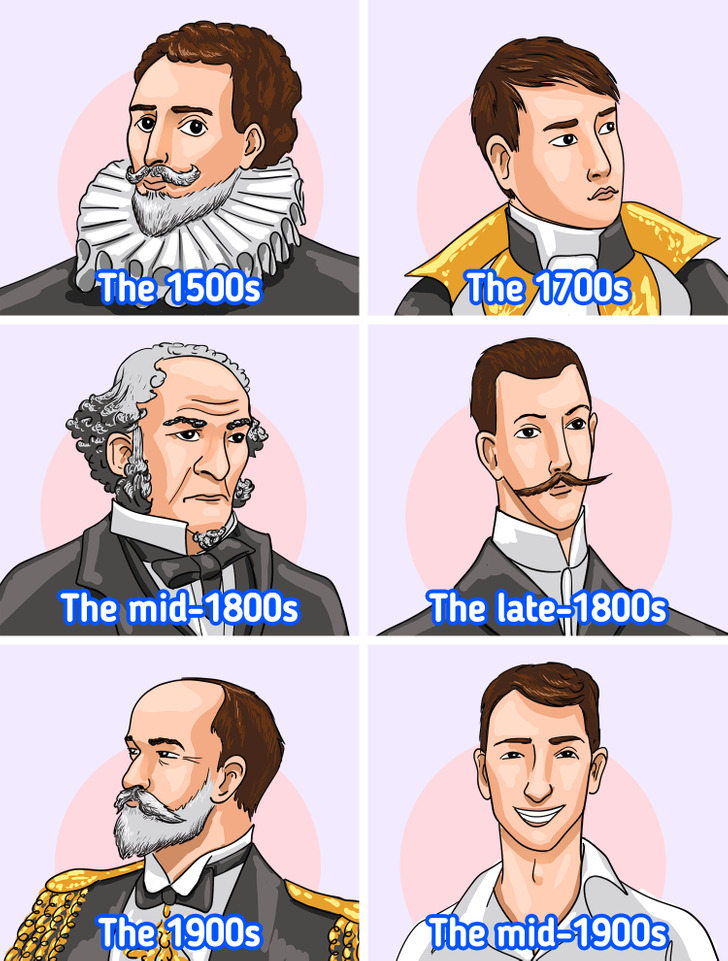
Throughout history, collars have evolved and had an important place in fashion. People used them to express their sense of aesthetics but also to send a certain message through their clothing:
- The 1500s: people started wearing the first collars during the mid-1400s. In the 16th century, the ruff-neck collars were extremely popular among the aristocracy circles (men, women, and children wore them). They were a symbol of wealth.
- The 1700s: during this time, men (mostly from the upper class) wore a very tall-standing stock collar.
- The mid-1800s: ruffed collars weren’t popular anymore as they were considered non-masculine. During the Victorian era, Gladstones became widely worn, standing collars, that would stick out at the side fronts.
- The late-1800s: this time was labeled by the invention of many collars that we know today. For example, during this period, detachable collars became popular among men. Collars and cuffs would get dirty very quickly, so it was necessary to wash shirts often. In this way, they would only need to wash the collars, as it was easier.
- The 1900s: at the start of the new century, a new fashion trend was introduced to men and women — Edwardian collars — slim and high, standing, with the uneven shape.
- The mid-1900s: detachable collars became a thing of the past when soft-collared shirts came to the scene (like the polo shirt invented by René Lacoste).
2. Anatomy of a collar
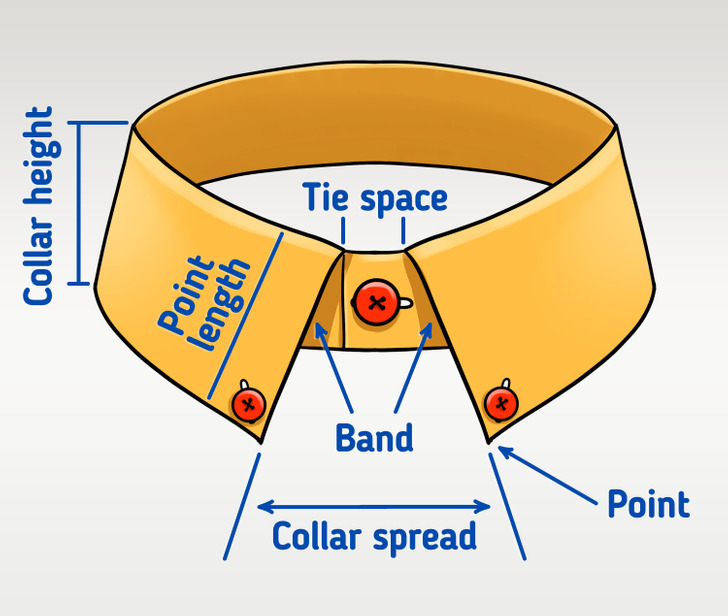
Collars come in different shapes and sizes, they can be wide or narrow, straight or rolled-up. If you take a look at the anatomy of a collar, you can have more information about how to choose the right one for you:
- Point: the tip of a collar. Some tips have a buttonhole so they can be buttoned so they don’t move.
- Point length: this is the distance that is measured from the collar points to the part where they are joined with the band.
- Band: the part that goes around the neck and supports the collar so it stays up.
- Collar height: the height of a collar that fits on the neck.
- Tie space: the distance between the 2 points on the top of the band, where the collar is buttoned.
- Collar spread: the angle from one tip of the collar to the other tip.
3. Types of shirt collars
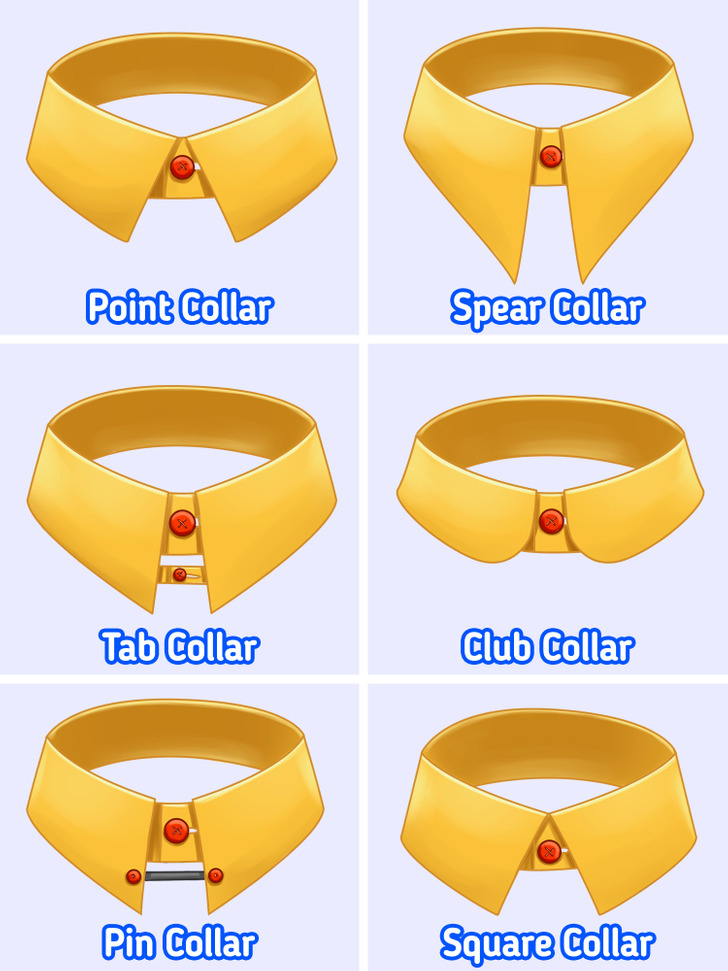
- The Point Collar: this is probably the most popular type and is best for men with a wide or round face but it flatters most facial shapes and sizes. Since the spread between the points is small, it doesn’t show any other parts of the tie, other than the knot. You can wear it with or without a tie.
- The Spear Collar: it looks similar to the previous one, but with longer points. You can often find them in vintage shops since these are the retro version of the point collars.
- The Tab Collar: has a small tab that goes across the middle which pushes the tie upward, so it cannot be worn without it. It suits the men with longer necks the best and it draws attention to the tie knot.
- The Club Collar: has an interesting history, as it was made by young students who attended Eton College and wanted to stand out. Its distinctive feature is its round collar points and it’s perfect for a smaller, square head shape. You can wear it with or without a tie.
- The Pin Collar: this one is designed with holes in the collar points and can be only worn with a tie. These holes allow you to insert the pins, bars, or clips which will hold the points together while pushing the tie forward. It flatters men with average to long necks.
- The Square Collar: has been worn since the early 20th century, like a detachable collar in the beginning. It has a minimal spread with square points and is best for a round face shape.
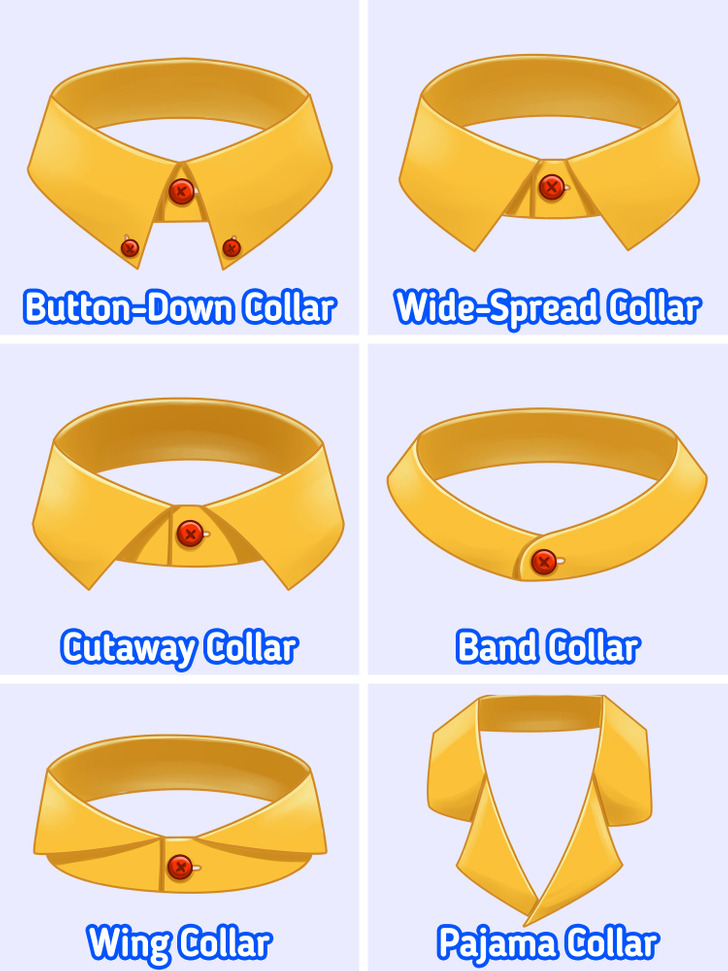
- The Button-Down Collar: the great thing about this type is that it goes nicely with all facial shapes and can be worn with or without a tie, depending on your personal style. It has buttonholes at the tip of each point that can be fastened to the buttons on each side of the shirt’s front. Button-down collars also have a rich history, as they were worn by English polo players and then introduced to the US market by Brooks Brothers.
- The Wide-Spread Collar: has a wider collar spread which goes nicely with wider tie knots like the Windsor or Half-Windsor. It flatters the narrow facial shape and you can wear it with a tie or without one. This collar style also allows you to combine it with a tie made from thicker material, like wool for example.
- The Cutaway Collar: has the largest possible distance between the points, which sometimes can even be at a 180° angle, which will look like a straight, horizontal line. It’s better to combine it with a larger knot if you are wearing a tie or to not wear a tie at all. This type is suited for narrow facial features.
- The Band Collar: this is a very popular collar style in Eastern culture, it doesn’t have points and cannot be worn with a tie. It’s recommended for people with smaller heads and shorter necks.
- The Wing Collar: the most formal of all types and is often worn at black-tie or white-tie events. The tips stand up, resembling the open wings of a bird. This style works well with all face shapes.
- The Pajama Collar: also known as Cuban or Bowling collar, this type is flat, large, and divided into 2 parts. You can also see them on Hawaiian shirts and they provide a more relaxed, casual look.
Bonus: How to check the fit of a collar
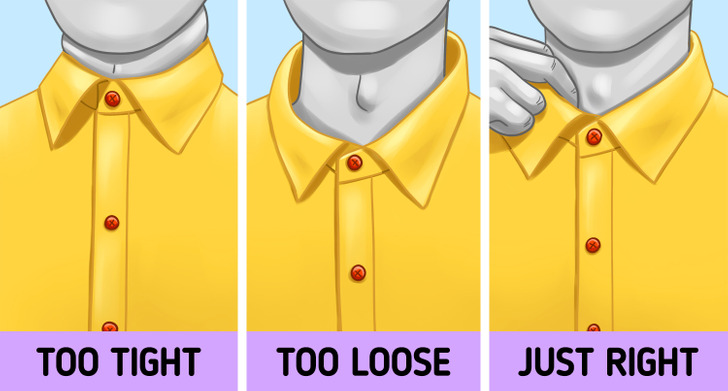
It is easy to check and see if a collar fits you — just put 2 fingers in between your buttoned-up shirt collar and your neck. Your fingers should slide comfortably between your skin and the fabric.